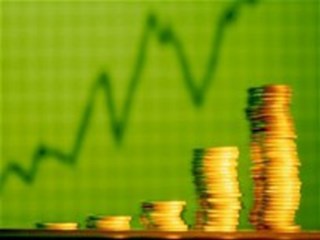
At a glance
Stagflation is a term guaranteed to create a sense of fear among economists. The term has been used for decades and it continues to be a concern, but just what is it, and how does it affect you? Let’s take a look.
Stagflation describes a situation in which an economy is simultaneously experiencing high inflation and low economic growth. In other words, prices are rising, but the economy as a whole is not. This combination of stagnation and inflation – or “stagflation” – is problematic for the economy, as it means prices are rising without the growth to cope with it, and it can be difficult for the Bank of England (BoE) to bring things back to normality.
In usual times of economic stagnation, the BoE would lower interest rates to encourage growth – borrowing becomes cheaper and saving is less attractive, so consumers are more inclined to spend and take out finance, which all boosts growth and normally increases inflation as well (find out more about base rate in our guide).
However, during times of stagflation, consumers are already spending and inflation is already high. Even if lower interest rates did boost growth, it would likely cause inflation to rise even higher, which could make it even more difficult for consumers to afford everyday items. This could hamper growth once again, and so the cycle continues.
Alternatively, if the Bank instead opts to raise interest rates in order to combat rising inflation, then borrowing will become too expensive – which means economic growth will remain low. In such circumstances it could even force people to stop spending altogether. So essentially, however the BoE moves interest rates, it will worsen either the cost of living or economic growth.
No. Thankfully, stagflation is rare. The last time the UK experienced a major period of stagflation was during the 1970s, when several economic shocks collided – including the oil crisis and industrial disputes – which led to both higher prices and lower employment. It wasn’t until the 1980s that inflation began to fall and growth started to return.
Since then the UK hasn’t experienced such significant stagflation, though it was felt to a lesser extent after the financial crash of 2008, and when the effects of the pandemic and Ukraine war combined to hit both the economy and inflation in 2023. More recently there have been fears that it could return amid rising inflation and stagnant economic growth, albeit with far less extreme figures than the 1970s.
Stagflation generally follows severe economic shocks. For example, when it first occurred it was after the price of oil doubled between 1973 and 1975 which went on to increase prices in a variety of sectors. This led to surging inflation and, combined with a series of macroeconomic factors including industrial strikes and unemployment (which caused a low growth environment), ultimately led to stagflation.
Similarly, the Ukraine war led to surging oil prices in 2023, which, when combined with an economy that was still recovering from the pandemic, meant we had both inflation and faltering growth in unison. Yet what causes a sluggish economy and high inflation to occur simultaneously will depend on the unique circumstances of each individual event, and there’s no clear path to stagflation – nor necessarily any way to avoid it, particularly if external pressures are on a more global scale.
Reading news on rising inflation can feel overwhelming, which is why figuring out how to manage your own finances can give you peace of mind. Read our guide on inflation and how to deal with it.
While there’s nothing we can do to avoid stagflation, there are things we can do on a more personal level to mitigate its effects. At its core, stagflation will affect affordability and can erode the value of your money in real terms, so if the cost of living increases it’s best to sit down and evaluate your own personal finances. Here are a few things you can do:
Unfortunately, there’s nothing that we can do on a personal level, but the Government and BoE can employ several monetary and fiscal policies to tackle stagflation.
How they attempt to do this will depend on the unique nature of the economy at the time. Some may believe controlling inflation is more urgent than economic growth, and vice versa. The bigger problem of the two is likely be the first one to solve. This decision can determine whether they look at raising interest rates to try to curb inflation, or reducing them to encourage spending. It’s a difficult balance to get right, as one will always impact the other.
Otherwise, there is consensus among some economists that stagflation will correct itself over time. In the 1970s, for example, stagflation rose from a surge in oil prices, and once these prices began returning to normality, stagflation subsided. So, ultimately it could be a case of riding it out, making sure that our finances are in the best place possible to try to cope with it.
Disclaimer: This information is intended solely to provide guidance and is not financial advice. Moneyfacts will not be liable for any loss arising from your use or reliance on this information. If you are in any doubt, Moneyfacts recommends you obtain independent financial advice.